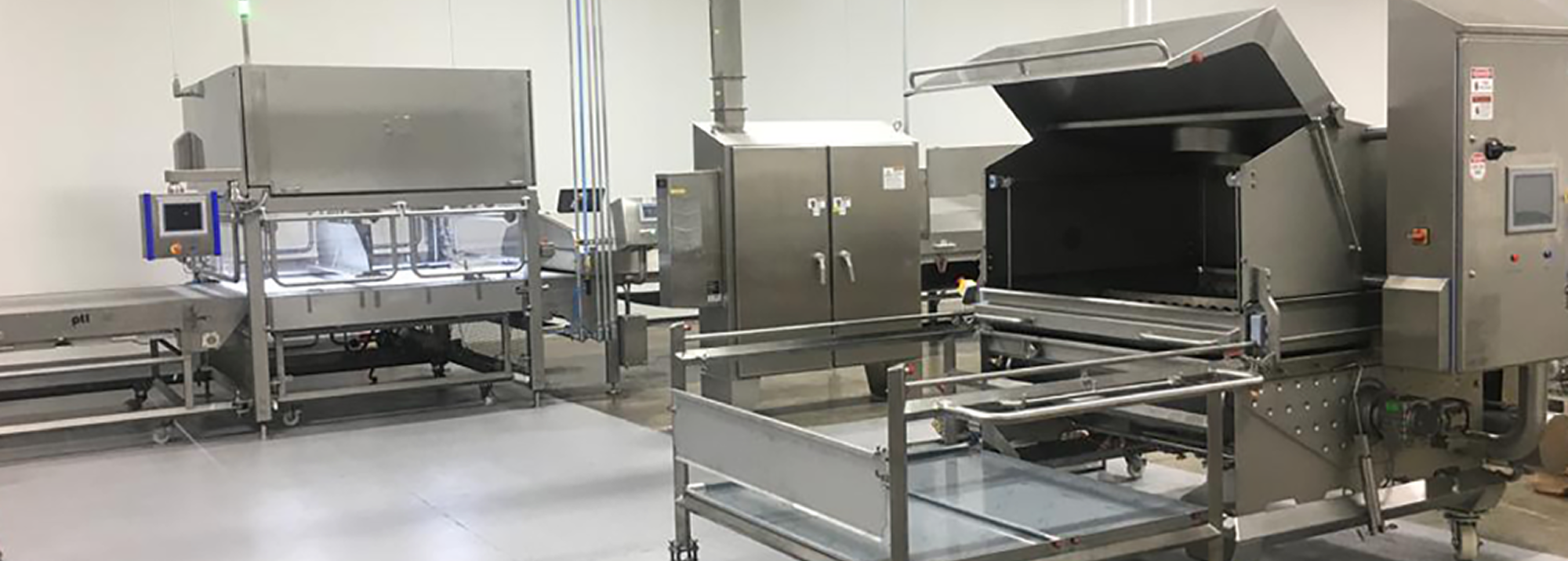Hygiene could be your competitive advantage
Proactive contamination prevention comes down to making it part of your BAU, rather than something you must do in addition. The most important part of that? The design of your equipment. As a baseline, your equipment must be built around the ten principles of hygienic design.

Support SKU proliferation with smarter hygiene practice
Hygienic production is a basic requirement – a must-have, rather than a value add. It’s something that holds production back, an annoying box to check as quickly as possible.
But we look at hygiene differently. When production equipment is engineered to minimize the possibility of contamination, it frees your production capability. Hygiene design can and should be supporting your efficiency and SKU proliferation.
At its most simple, faster changeovers mean more flexibility and more SKUs.
Added to that, food safety incidents cost an estimated US$77.7 billion in 2012, making preventative action a worthwhile investment.
Making best-practice hygiene simple
Proactive contamination prevention comes down to making it part of your BAU, rather than something you must do in addition. The most important part of that? The design of your equipment. As a baseline, your equipment must be built around the ten principles of hygienic design. This is equipment that:
- Can be cleaned to a microbiological level
- Is made of materials that are compatible with food products, the environment, and sanitizing products
- Can be easily inspected, maintained, and cleaned
- Is self-draining
- Has hollow areas like frames or rollers hermetically sealed
- Doesn’t have pits, cracks, corrosion, or protruding edges where product can collect
- Doesn’t work against sanitary conditions by harboring or growing bacteria
- Has hygienic maintenance enclosures (like electrical control panels or chain guards) and human/machine interfaces (like push buttons and valve handles)
- Doesn’t work against the hygienic performance of your other equipment and systems
Any decent production equipment should meet these basic requirements. But to turn hygiene processes into a streamlined part of your operations, give you the flexibility to grow your SKU numbers, and a competitive edge, you’ll need to go farther than that.
Invest in team training and instruction
The best-designed equipment is only as good as the team operating it. That’s why your equipment should be supported with on-site training and easy-to-follow instructions. As part of any installation, we make sure the wider team is well-versed in the use of the equipment and include large, picture-based instructions with all our machines.
“PTL truly cares about your success,” says Fred Grep, Hearthside Food Solutions’ Director of Engineering.
Source customized equipment
The reality is that off-the-shelf equipment won’t perfectly suit the way you work or your existing equipment. That means you’ll have to find workarounds to achieve even minimum hygiene standards. With equipment that suits your requirements, you’re not faced with those compromises. That’s why we follow a ‘creating together’ process. After understanding your unique requirements, space, and existing equipment, we produce basic models, sketches, layouts, and process-flow diagrams for you to review.
That collaborative approach meant Hearthside Food Solutions got equipment that slotted right into their existing line. That, says Fred, is what gave them their competitive advantage.
“PTL’s equipment and approach to customer service enables us to create a competitive advantage. By [PTL] being open to our modifications and design change requests, we can create superior solutions for customers and gain increased flexibility in our operations.”
Smart design features
When it comes to equipment that streamlines your hygiene practices, details matter. For example, in PTL’s V20 Melter, non-product contact surfaces are also designed with hygiene in mind. That’s because even with the highest standards of containment, bacteria can still travel from one part of the facility to another.
That attention to detail was part of what impressed Tru Food Manufacturing.
“What was obvious was the amount of time and thought that had been put into all aspects of the machine. This equates to ease of use, ease of sanitation, minimal downtime for sanitation, and flexibility to switch between products, to keep up with our customers’ demands.” – Mike Berko, Project Engineer.
Clever innovations
Other design elements that make hygiene practice far simpler are the v20’s uniquely small footprint and portability. Its self-contained, removable melt grid and accessible stirrer drive make processes more flexible and compliant with regulations. Like all PTL equipment, it also keeps the number of swap-out parts to a minimum. And any that remain are tool-less, easily stored, and handled on hygienic storage and wash-down carts.
“The short length of piping means the circuit can be broken down into easy-to-handle, individual components that can be easily and thoroughly sanitized in a fraction of the time that would be required with a traditional setup,” adds Mike.
Another feature is multiple safety zones along a process line, so sanitation starts in one zone as it completes production. Similarly, secondary swap-out assemblies allow for quick changes. For example, an enrober with two swap-out reservoir assemblies means fast change times, and cleaning can be done when production is up and running again.
“Their equipment reliability and exceptional sanitary design are outstanding,” says Fred.
Your hygiene could be your edge
SKU proliferation comes down to flexibility, which must include impeccable hygiene. With hygiene practices built into processes and equipment as standard, it becomes a competitive advantage, rather than a step that’s holding you back. Achieving that requires a mix of steps, including sourcing equipment that’s customized to your requirements, making use of innovative hygiene features, and rigorous team training. The result? Your facility will be free to rapidly shift between SKUs, knowing that customers, consumers, and the reputation of your business are safe.